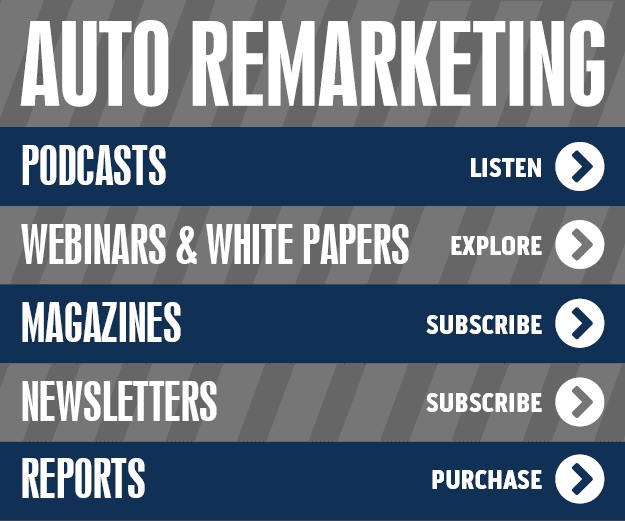COMMENTARY: Certified pre-owned is having a moment, but will dealers seize it?

By subscribing, you agree to receive communications from Auto Remarketing and our partners in accordance with our Privacy Policy. We may share your information with select partners and sponsors who may contact you about their products and services. You may unsubscribe at any time.
In a market still shaking off pandemic distortions and absorbing the economic uncertainty of new tariffs, certified pre-owned vehicles are again quietly emerging as an important strategic play for both automakers and their dealers.
In light of current conditions — and perhaps because of them — the math adds up in favor of broader use of CPO. The industry statistics gathered by J.D. Power demonstrate it quite clearly. CPO vehicles offer faster turns, better front-end grosses, and stronger brand loyalty. But not all carmakers and not all dealers are leaning in. The question is, why not?
Coming out of the pandemic, many dealers lessened their emphasis on certification, convinced the used market was hot enough that CPOs added cost and effort didn’t pay off. But our data told a different story even then, and it’s more compelling now.
Certified vehicles are turning faster. On average, they turn about two weeks quicker than non-certified units. Gross profits are consistently stronger versus similar non-CPO vehicles. And CPO loyalty metrics continue to outshine non-certified sales, especially in premium segments.
Reassurance without sticker shock
Today, we’re seeing a new pivot. With interest rates still high and affordability stretched thin, many consumers are hesitating to buy new vehicles or find themselves almost completely shut out of the new-vehicle market.
Throw in tariff threats and the potential of quickly escalating new car prices, and CPO can appear to many buyers as a value sweet spot, delivering quality assurance without the full sticker shock.
Subscribe to Auto Remarketing to stay informed and stay ahead.
By subscribing, you agree to receive communications from Auto Remarketing and our partners in accordance with our Privacy Policy. We may share your information with select partners and sponsors who may contact you about their products and services. You may unsubscribe at any time.
As is always the case, profitably managing new and used inventory is the key to success. For most dealers, the 3-year-old vehicle is the backbone of their CPO strategy. That’s no surprise since most leases run 36 months, feeding a steady stream of high-quality, low-mileage used vehicles back into the system.
In the first quarter of this year, we saw a swing back toward certifying more of these 3-year-olds, even though the certification rate for one-year-olds remains higher.
This shift is a return to pre-pandemic behavior, but with new wrinkles. Dealers have less brand-specific used inventory on their lots than they did a year ago, about two percentage points less, on average. This is partly due to more lease returns being sold elsewhere and more trade-ins from off-brand vehicles. As a result, dealers are being forced to work harder with the inventory they have. The good news? They are. Certification rates are rising, even as eligible volume slips.
Certification rates are rising
In the mainstream market, CPO certification rates have climbed nearly five percentage points during the past five quarters. That’s meaningful. Even more so when considering that sales have risen year over year. Part of that bump may be seasonal or spurred by tariff fears, but it’s still a clear sign: When the CPO value proposition is visible, buyers respond.
Brand behavior varies widely. A select pair of premium and mass market brands dominate the CPO space, largely due to their volume and deep consumer trust. Even with relatively low average certification rates, one well-known mass market brand and its sibling premium brand generate high CPO sales due to the sheer scale of their operations and their dealer engagement. The premium brand’s CPO-to-CPO loyalty rivals — and sometimes exceeds — its new-to-new loyalty.
Other premium brands tell a different story. Often, their high certification rates are driven by contractual obligations and dealer incentives, not necessarily a belief in CPO for its own merits. Still, the results are there, but additional opportunities exist that haven’t been exploited.
Some premium brands heavily base their CPO efforts on 1-year-old loaners and demos, which come with lower certification fees but also offer tighter profit margins. They might be leaving money on the table by failing to certify older vehicles, especially those coming off lease.
CPO offers broad benefits
The challenge for those brands and for the dealers representing them is to recognize that certifying used vehicles can have across-the-board benefits. The data is clear: Certification pays.
Yet too many still default to short-term logic by basing their efforts on 1-year-old demonstrators. Yes, they offer lower reconditioning costs than 3-year-old vehicles, delivering faster turnaround with less effort. But in this market, a strategic certification effort has the potential to deliver outsized returns, both financially and in customer retention.
Another CPO benefit is good affordability in a market in which that is increasingly rare. For those many buyers who find new-vehicle prices a bridge too far for their budgets, CPOs offer a safety net. They promise quality, warranty coverage and peace of mind at a more approachable price than equivalent new vehicles. For many brands, and especially for those whose reputations for reliability stretch across the decades, even older certified units offer real appeal.
Remainder of 2025
So, what does the balance of 2025 look like? Certainly, we won’t see a used-vehicle frenzy like we saw in pandemic-ravaged 2021, and that’s a good thing. A less frenzied market keeps the door open for CPO programs to demonstrate value to manufacturers, dealers and shoppers. Dealers stand to gain when they commit to certifying strategically, train their teams, structure incentives properly and market the value of CPO effectively.
But the window won’t stay open forever. As off-lease supply begins to shrink later this year, dealers will have to be more aggressive in sourcing and holding onto CPO-eligible vehicles. Letting them slip to auction or ignoring the certification opportunity could mean losing both profit and long-term loyalty.
CPO is no longer just a niche that is only useful here and there. It’s becoming a critical tool for dealers navigating an affordability-driven, high-interest-rate market. The numbers back it up. The only question is who’s paying attention?
Ben Bartosch is manager of certified pre-owned solutions at J.D. Power.


